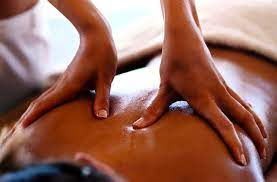Shirodhara (Ultimate Ayurvedic Therapy) vs Hormonal Replacement Therapy (HRT) in management of Menopausal Syndrome
- Alena Speed
- Jul 8, 2024
- 4 min read

I personally experienced profound benefits of Shirodhara therapy while undergoing Panchakarma Ayurvedic Detox myself as well as observing my dear clients receiving Shirodhara treatments at my Clinic.
However, don't take my word for it...
Id like to talk about the randomised study conducted to show if shirodhara treatments could improve side effects of perimenopause / menopause / post menopause.
Main complaints of the menopausal patients included:
anxiety, disturbed sleep, and fatigue
irritability, depression, vertigo
headaches
joint pains and backache, muscular aches
constipation, dyspepsia
palpitations
decreased libido
tingling sensations in different body parts
hot flushes and frequent urination
flatulence
Patients were divided into three groups:
Group A was treated with conjugated estrogens 0.625 mg (HRT) once daily for 45 days
Group B was treated with Saraswatarishta (Ayurvedic tonic drink) 20 ml mixed with water and taken before meals twice a day for a duration of 45 days
Group C was treated with Shirodhara with Bala Taila, 30 min per sitting for 45 days (After 7 days of continuous Shirodhara, a gap of 3 days in between before the next 7 days sitting with 3-3 days gap after every 7 days)
Study used specialized Ayurvedic rating scales like Manasa Pariksha Bhavas as well as the Hamilton Anxiety Rating Scale, Hamilton Depression Rating scale, and Menopause Rating Scale were adopted to assess the effect of therapy.
The effects were examined on the chief complaints as well as the associated complaints.
Patients undergoing Shirodhara had better relief of the psychic symptoms of menopause as compared to the other two groups. Saraswatarishta also showed encouraging results in managing the associated somatic symptoms and the psychic symptoms. Hence, the study concluded that Shirodhara can be used as an alternative therapy to HRT.
Ok, let's look at the Shirodhara therapy in a bit more detail.
Shirodhara, as you might have previously experienced, is a continuous stream of warm oil over the forehead. It's very calming, deeply meditative and relaxing.
Many of you ask, what does it actually do and how does it benefit?
Well the study explains it quite well. Let's see if I can interpret in more simple words.
Herbal medicated oil is continuously poured onto the skin of your forehead and scalp creating passive diffusion of the oil through the layers of the skin.
Physical effect
The symptoms like tension, headache, and muscular tension caused due to sustained contraction of skeletal muscles can be relieved by the physical effect of Shirodhara. Various muscle stress and stiffness can be relieved by Shirodhara. It is well recognized that for relieving this type of tension, oil is the most effective.
Effect on blood supply
Due to warm effect of the oil used for Shirodhara there is local vasodilatation. Shirodhara lasts for 35-55 min; the continuous flow of warm fluid on the forehead for such a long period will cause mild vasodilatation. The region where Shirodhara is performed overlies mainly the cortex arterial branches, venous sinuses, venous reservoir of the brain, the superior sagittal and the cavernous venous sinuses. Shirodhara improves the circulation in these areas and helps in regularizing the blood supply of brain.
Effect on central nervous system
The hypothalamus controls many body activities and is one of the major regulators of homeostasis. Sensory input from the external and internal environments ultimately comes to the hypothalamus via sensory pathways originating in somatic and visceral sense organs. Other important functions include: control of the autonomic nervous system, control of the pituitary gland, control of body temperature , regulation of eating and drinking, regulation of diurnal rhythms and states of consciousness, regulation of emotional and behavioral patterns (acting together with the limbic system), control of corticotrophin releasing hormone (CRH), increasing serotonin concentration in the synaptic cleft, etc.
It can be postulated that Shirodhara has some effect on the hypothalamus, with resulting relief of most of the psychic and somatic disorders.
Effect on anxiety
It may decrease anxiety by facilitating the inhibitory presynaptic action of GABA and sedative activities in limbic system.
Effect on depression
Shirodhara may have an anti depressant effect like Mono Amine oxidase inhibitors. The enzyme MAO is present intra-cellularly in most of the tissues. Inhibition of the MAO-A decreases the deamination of Nor-Adrenaline (NA) and to a lesser extent of 5-HT which is associated with the antidepressant action. Drugs used in Shirodhara may inhibit the reuptake and cause a localized increase in active NA in the synaptic gap.
Effect on endocrine system
An effect of Shirodhara on hormone secretion has also been postulated considering the effect on the hypothalamus (as hypothalamus is the main controller of endocrine secretions, acting through the pituitary gland, i.e., the hypothalamus–pituitary axis).
Effect on autonomic nervous system
Shirodhara may also have an alpha-adrenergic blocking effect and thus block certain actions of adrenaline and noradrenaline. It may produce moderate inhibition of actions of acetylcholine and 5-hydroxytryptamine. It may have a central depressant action on the hypothalamic center controlling sympathetic activity. It may also act on the catecholamine uptake mechanism, acting as sympathomimetic amine. Shirodhara may also act on the adrenergic neurons, probably producing their effects by modifying the synthesis, storage, and uptake mechanisms of noradrenaline.
My Recommendation of Shirodhara Treatments Frequency
Considering such powerful effects of this therapy it should not be overlooked as part of your health maintenance and self-care routine.
A one off Shirodhara treatment can be enjoyed periodically to support your vata dosha/healthy nervous system
Sessions of three, five or seven daily treatments shall be prescribed to treat an imbalance depending on severity of symptoms or as part of the Panchakarma detoxification
Referenced Study: An assessment of Manasika Bhavas in menopausal syndrome and its management, Ayu. 2010 Jul-Sep; 31(3): 311–318
Khyati Santwani, Ph.D. Scholar, V. D. Shukla, M. A. Santwani, M.D.(Medicine),1 and Gayatri Thaker2





Comments